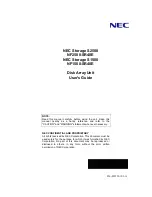
+-----------------------------------------------------------+
| IBM SCSI TAPE & MEDIUM CHANGER UTILITY PROGRAM |
+-----------------------------+-----------------------------+
| GENERAL COMMANDS | BASIC SCSI COMMANDS |
| 1: Open Device | 9: Test Unit Ready |
| 2: Close Device | 10: Inquiry |
| D: Device Type | 11: Request Sense |
| M: Menu Refresh | 12: Reserve |
| Q: Quit Program | 13: Release |
| | 50: Log Sense |
| | 51: Mode Sense |
+-----------------------------+-----------------------------+
| SERVICE COMMANDS | MEDIUM CHANGER COMMANDS |
| 3: Serial/Subsys Number | 14: Move Medium |
| 4: Query Microcode Level | 15: Position To Element |
| 5: Force Dump | 16: Element Information |
| 6: Store Dump | 17: Inventory |
| 7: Download Microcode | 18: Audit |
| | 19: Lock/Unlock Door |
+-----------------------------+-----------------------------+
| TAPE DRIVE COMMANDS |
| 20: Read Data 32: Locate End Of Data |
| 21: Write Data 33: Get Record Size |
| 22: Write File Mark 34: Set Record Size |
| 23: Erase Tape 35: Get Device Status |
| 24: Rewind 36: Get Device Info |
| 25: Retension 37: Get Media Info |
| 26: Offline 38: Get Position |
| 27: Load/Unload Tape 39: Set Position |
| 28: Forward Space File 43: Display Message |
| 29: Backward Space File 45: Report Density |
| 30: Forward Space Record 49: Read/Write Test |
+-----------------------------------------------------------+
Figure 88: TAPEUTIL Program menu – Sun Solaris system
If command-line parameters are provided when the program is started, the command-line mode is
started. For each command-line execution of the program, the device is first opened. The specific
command is issued, and the device is then closed. The program can be driven from within a shell script, if
wanted. Results of the operation are displayed only when run in verbose mode. No information is
displayed when not in verbose mode. This information is useful for quiet shell script implementations. A
completion code, as defined in
/usr/include/sys/errno.h
for the operation that is requested, is
always returned from the program upon exit (in both verbose and quiet mode).
Use the tapeutil program in command-line mode, as follows:
tapeutil -f device -o operation [options]
where device is the name of the tape device special file (for example:
/dev/rmt/1st
) and operation is
one of the values that are listed here. The device special file and the operation are required. The specific
options associated with a particular operation are indicated in Table 159 on page 264, Table 160 on page
265, Table 161 on page 265, and Table 162 on page 265. Parameters that are enclosed in square
brackets are optional. All others are required.
Table 159: Service commands and syntax
Service Commands
Syntax
Query Serial Number
tapeutil -f f.-o qsn [-w w][-v]
Query Microcode Level
tapeutil -f f.-o qmc [-w w][-v]
Force Dump
tapeutil -f f.-o fdp [-w w][-v]
Store Dump
tapeutil -f f.-o sdp [-w w][-v] -z z
Download Microcode
tapeutil -f f.-o dmc [-w w][-v] -z z
Format Cartridge
tapeutil -f f.-o fmt [-w w][-v]
264 IBM 3592 TS1140, TS1150, TS1155, and TS1160 Tape Drives: Maintenance Information
















































